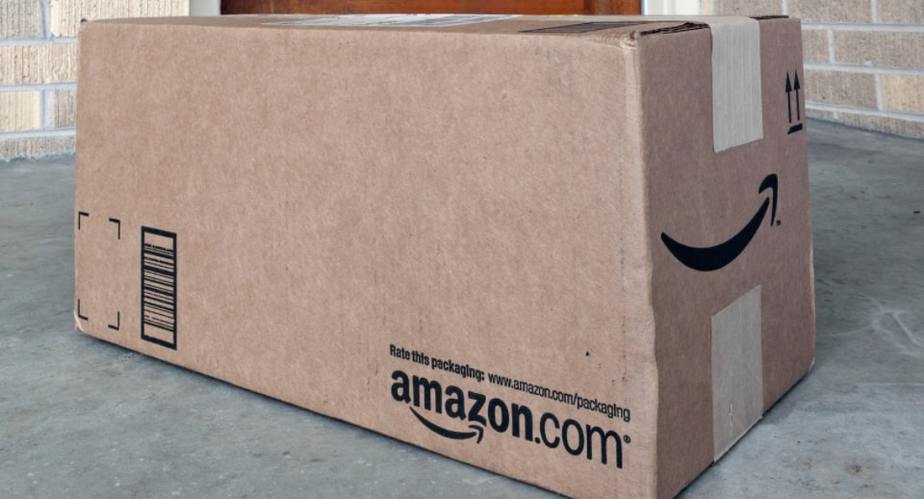Amazon is one of the biggest names in e-commerce, with millions of popular household products that customers around the world can order with just a few clicks on their phones or computers.
However, with millions of products sold weekly on Amazon, there are also thousands of products that are returned. So what does Amazon do with returns? I did some digging and here is what I discovered!
Key Takeaways
What Does Amazon Do With Returns In 2021?
Amazon processes returns and sells the returned goods on Amazon Warehouse or to e-commerce liquidation retailers. While some returns may make their way back on Amazon, the majority are put on pallets and sold in bulk to companies like Direct Liquidation and Liquidation.com.
If you are interested in learning more about what Amazon does with returned products, then keep reading to discover all the details.
How Does The Amazon Return Process Work?
Amazon has a global store return policy and a dedicated returns center where customers can get returns for items within 30 days of shipment receipt.
Amazon and most of its third-party sellers offer this generous refund policy, although some products come with different return requirements or policies.
Amazon states it can take up to 25 days for the returned item to be received at the fulfillment center. Refunds are then processed within several business days.
Once the returned item is checked into the fulfillment center and the refund finalized, Amazon workers may list the item on Amazon Warehouse where gently used products are sold.
Otherwise, it’s prepared for liquidation with many other returned products.
Where Do Returned Amazon Products Go?

Returned products are processed at Amazon’s fulfillment centers and distributed to warehouses accordingly.
Gently used items, such as those where the customer simply changed their mind or it was the wrong item, may be added to Amazon Warehouse.
The rest of the returned products are packaged on pallets in the storerooms, which are then sold in bulk to liquidation companies.
Liquidators who buy stock from Amazon purchase these pallets at a low cost, and in turn, take these products and sell them through their liquidation sites.
For example, Liquidation.com is a B2B liquidation marketplace that resells items not only from Amazon, but also from other mass merchandise retailers like Target, Home Depot, and Lowes.
What Kind Of Items Are Returned on Amazon?
A lot of the things you buy on Amazon can be returned, subject to the seller’s policies and requirements.
The vast majority of household products on Amazon are eligible for returns, from clothing to animal supplies, home improvement tools to computer accessories.
These products are generally easy to resell on Amazon Warehouse or to liquidation companies.
Some things like grocery items or downloadable software may not be returned, and it should be stated clearly on the product listing and in your account orders if it’s eligible for returns or not.
Why Does Amazon Liquidate Returned Products?
Small businesses account for over 50% of units sold online on Amazon, and the e-commerce giant and its retailers benefit from a liquidation plan for returned products.
Often, it’s not worth the time, labor, and costs to ensure a returned product is suitable to be placed directly back on Amazon.
That’s why Amazon chooses to liquidate returned items through mass liquidation warehouses.
Think about it this way: if Amazon took the time to individually process each returned item, check it for quality, repackage, and relist on the site, it would take up valuable resources for the seller.
By processing the returns quickly and selling the returned items on Amazon Warehouse or to a third-party liquidation site, everybody wins.
Amazon and its millions of sellers get to keep more money and resources instead of tying them up in individual returns.
Shoppers can also rest assured that their returned products usually get a second chance at life, although it cannot be guaranteed that every item will be resold.
Are Returned Products On Amazon Warehouse A Good Deal?

With over 100 active fulfillment centers in the U.S., Amazon has a considerable warehouse space to resell gently used products, including those that are returned by shoppers.
Many of these items feature on Amazon Warehouse, a section of the retailer’s online platform where people can browse open-box items and take advantage of discounted deals.
Amazon inspects the condition of each item prior to selling via Amazon Warehouse, so consumers can expect the same level of service and quality that comes with standard Amazon purchases.
After processing returned items and designating them for sale either on Amazon Warehouse or through liquidation stock, Amazon staff take the warehouse goods and complete detailed descriptions for each.
Every previously used or returned product on Amazon Warehouse comes with a condition description, such as like new, very good, good, or acceptable.
If you’re looking to reuse items someone else has returned or barely used, then products with the like new label are best.
Amazon Warehouse goods in perfect working condition with just some possible wear and tear to the packaging are like new.
Returned items that may have slight cosmetic imperfections are usually listed under very good to give shoppers a better idea of what they are buying, and the same goes for products labeled good and acceptable.
To learn more, you can see our related guides on what sponsored means on Amazon, what is Amazon Woot, and what Amazon Basics is.
Conclusion
When you return something to Amazon, it’s unlikely to be resold directly to everyday consumers unless it’s in pristine condition or in high demand. The majority of returned items end up on Amazon Warehouse or liquidation sites.
Due to Amazon’s huge presence and millions of transactions, it’s most cost-effective for the company to liquidate returned items and make more space in the warehouse. Next time you return an item on Amazon, expect it to be liquidated and resold at a competitive price.
